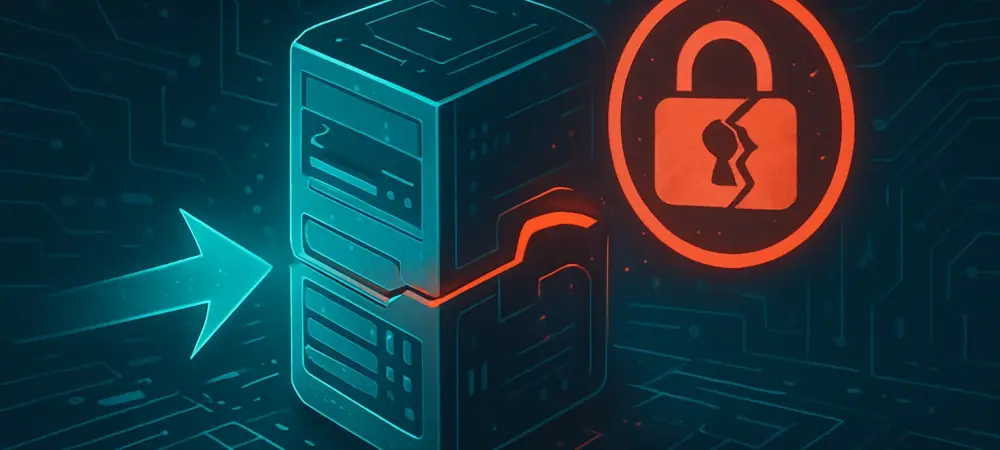Introduction to the Critical Vulnerability in GoAnywhere MFT
Imagine a scenario where a single flaw in a widely used file transfer system could open the door to devastating cyberattacks, compromising sensitive data across thousands of organizations. This is the alarming reality facing users of Fortra’s GoAnywhere Managed File Transfer (MFT) software, as a critical vulnerability, identified as CVE-2025-10035 with a CVSS score of 10.0, has been disclosed. This flaw represents the highest level of severity, posing a significant threat if left unaddressed.
The importance of tackling this issue cannot be overstated, as exploitation could lead to arbitrary command execution, potentially allowing attackers to take full control of affected systems. Delaying action risks catastrophic consequences, including data breaches and ransomware attacks. This guide delves into the nature of this vulnerability, its historical context within the software, actionable mitigation steps, and the broader implications for users who rely on this platform for secure file transfers.
Why Immediate Action Is Crucial for GoAnywhere MFT Users
The severity of CVE-2025-10035 stems from a deserialization flaw in the License Servlet of GoAnywhere MFT, which could enable attackers to execute malicious commands if they possess a forged license response signature. This vulnerability is particularly dangerous because it can be exploited remotely, especially on systems that are accessible over the internet. Such a high-risk issue demands urgent attention to prevent attackers from gaining unauthorized access to critical infrastructure.
Swift response to this threat offers multiple benefits, including safeguarding sensitive information, thwarting ransomware campaigns, and preserving organizational trust. Companies that act promptly can avoid the reputational damage and financial losses associated with a breach. Proactive measures also demonstrate a commitment to cybersecurity, which is vital in today’s threat landscape. Compounding the urgency is the sheer number of internet-facing GoAnywhere MFT instances—thousands of systems are exposed online, creating a vast attack surface. This widespread accessibility significantly heightens the likelihood of exploitation by malicious actors scanning for vulnerable targets. Delaying mitigation in such an environment could prove disastrous for any organization relying on this software.
Steps to Mitigate the GoAnywhere MFT Vulnerability
Addressing the critical flaw in GoAnywhere MFT requires a structured approach grounded in actionable recommendations from Fortra and cybersecurity experts. Organizations must prioritize immediate steps to secure their systems against potential exploits. The following best practices provide a clear path to mitigation while highlighting the dangers of inaction.
Understanding the real-world risks is essential for grasping the stakes involved. Failure to act swiftly can result in severe breaches, as attackers often move quickly to exploit newly disclosed vulnerabilities. By implementing the outlined measures, companies can significantly reduce their exposure to this critical threat.
Applying the Latest Patch for Protection
The most effective way to eliminate the risk posed by CVE-2025-10035 is to update GoAnywhere MFT to version 7.8.4 or Sustain Release 7.6.3, as advised by Fortra. These versions include a fix for the deserialization issue, effectively closing the door on potential exploits. Organizations should treat this update as a top priority to ensure their systems are no longer vulnerable.
To apply the patch, administrators must first download the latest version from Fortra’s official support portal and follow the provided installation instructions. This process should be executed with minimal delay, as every moment a system remains unpatched increases the chance of an attack. Testing the update in a controlled environment before full deployment can also help avoid unintended disruptions.
Real-World Impact of Patching Delays
Historical examples underscore the peril of procrastination in addressing such vulnerabilities. A prior flaw in GoAnywhere MFT, identified as CVE-2023-0669, was exploited by ransomware groups like LockBit, leading to widespread data theft and system compromise. These incidents serve as a stark reminder that delayed patching can have severe repercussions, often resulting in significant operational and financial damage.
Restricting Public Access as a Temporary Safeguard
For organizations unable to apply the patch immediately, limiting external access to the Admin Console offers a crucial interim defense. By restricting public-facing exposure, companies can minimize the risk of attackers exploiting the vulnerability over the internet. This measure acts as a stopgap while preparing for a full update.
To implement this safeguard, administrators should configure network settings to block external access to the Admin Console, allowing only trusted IP addresses or internal networks to connect. Utilizing firewalls and VPNs can further enhance this protection. While not a permanent solution, such steps significantly reduce the attack surface during the critical window before patching.
Case Study on Exposure Risks
Insights from cybersecurity expert Ryan Dewhurst of watchTowr highlight a key design challenge with GoAnywhere MFT: many systems are inherently internet-facing, amplifying their susceptibility to attacks. This structural aspect means that even well-intentioned organizations may unknowingly leave their systems exposed. Dewhurst’s analysis emphasizes that without access restrictions, the likelihood of exploitation remains alarmingly high, especially given the software’s history of attracting malicious attention.
Conclusion: Addressing Recurring Threats in GoAnywhere MFT
Reflecting on the challenges posed by CVE-2025-10035, it becomes evident that recurring vulnerabilities in GoAnywhere MFT demand a sustained commitment to security. The pattern of critical flaws over recent years highlights a persistent issue that organizations must confront with vigilance. Each incident serves as a lesson in the importance of rapid response and robust defenses. Looking ahead, the path forward involves adopting a proactive stance—ensuring that patching becomes a routine priority rather than a reactive measure. IT teams are encouraged to integrate continuous monitoring into their workflows, staying alert for advisories from Fortra. Exploring additional security tools, such as intrusion detection systems, also offers a way to bolster resilience against future threats.
Ultimately, the experience underscores a broader need for strategic planning in cybersecurity. Organizations must consider diversifying their file transfer solutions or implementing layered protections to mitigate risks tied to any single platform. By embedding these practices into their operations, companies can better navigate the evolving landscape of digital threats with confidence.

